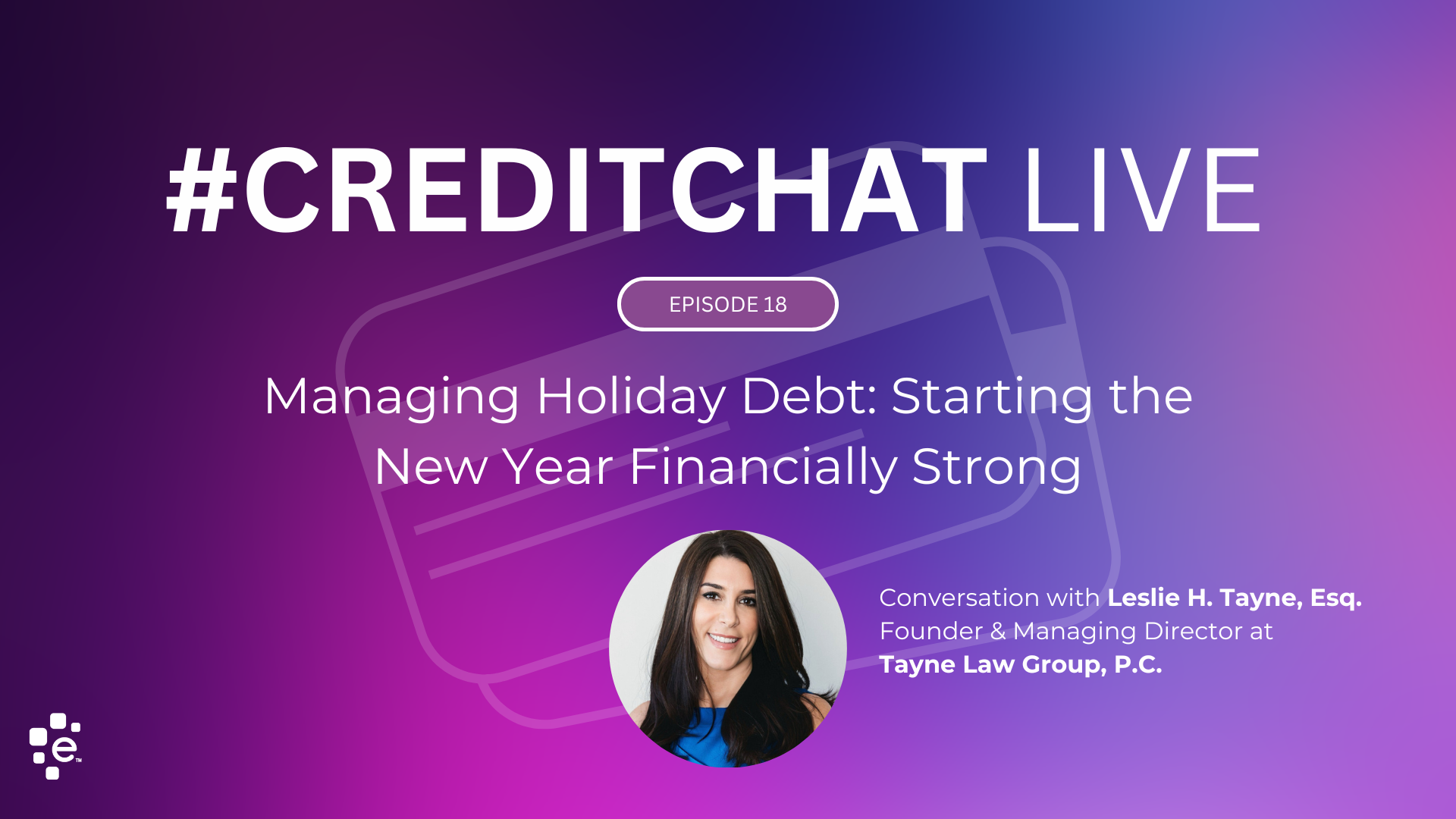Lorem Ipsumis simply dummy text of the printing and typesetting industry. Lorem Ipsum has been the industry’s standard dummy text ever since the 1500s, when an unknown printer took a galley of type and scrambled it to make a type specimen book. It has survived not only five centuries, but also the leap into electronic typesetting, remaining essentially unchanged
Author One

Alternative data opens up doors to financial access for consumers – and Experian has been at the forefront of collecting, using and advocating for the use of alternative data for many years. This topic was explored and analyzed by the Consumer Financial Protection Bureau (CFPB) in a hearing today in Charleston, West Virginia. Experian is a big advocate for full-file reporting, which means that we support the widespread reporting of alternative data—including, rental payments, utility payments and cellular telephone payments to name a few. For a large segment of the population, the reporting of these types of payments could provide opportunities to establish and/or build a credit file. We believe consumer behavior has evolved and technology has advanced in a way that will soon enable Experian to facilitate lending to this population that we still call credit invisible. We are actively working to make these people visible, and to help them get access to responsible lending. For this reason, Experian supports enactment of the Credit Access and Inclusion Act (H.R. 435), which would allow consumers to benefit from the inclusion of alternative data into credit files. Consumers are at the heart of everything we do and this is why we chose to sponsor a two-year grant with the Credit Builders Alliance (CBA). This grant will enable us to work with affordable housing providers and public housing authorities to aid them in reporting rent payments to the credit bureaus in order to provide their low and moderate income residents with a valuable credit build opportunity. The project is ongoing and we are hopeful that this will help and empower many consumers and that this model of rental data reporting will continue to flourish in the future. Experian has conducted several studies looking at how the inclusion of alternative data could improve the lives of many Americans: After Experian began incorporating on-time rental payments to credit files through Experian RentBureau in 2011, we released an analysis in July 2014 that revealed the inclusion of on-time rental payments to credit files helps unbanked consumers integrate into the mainstream banking system. We also conducted a study on the impact of alternative reporting on-time utility payments in credit reports. Experian found that including these figures in credit reports would cause a 15 percent increase in those considered prime, which means those that pose little risk to lenders, as well as a 50 percent drop in the number of consumers considered to have a poor (sub-prime) credit history. In addition to these studies, other third parties have made similar findings. One study by the Policy and Economic Research Council (PERC) and the Brookings Institution, found that when energy and utility companies report both positive and negative data, those without a credit history dropped to 5 million. Experian has demonstrated that incorporating new data sources into credit files is a positive step for consumers because it moves them from being unscorable to scorable, and we believe CFPB’s continued attention on this important initiative could help millions of Americans finally obtain the loans and credit that were previously out of reach. By building a comprehensive picture of data points, this can immeasurably help underserved populations, including young adults, minorities and immigrants, access newfound opportunities. Credit bureaus like Experian can then use this data for good by building profiles of these consumers, many of whom would be able to then obtain credit for the first time. It ultimately unlocks greater potential for our economy.

Working in partnership with British charity, the National Literacy Trust, Experian has helped to analyze literacy levels across England. The study reveals that 86% of English parliamentary constituencies contain at least one area with serious literacy issues. By using our socio-demographic classification system, Mosaic, and harnessing The National Literacy Trust’s expertise, we have been able to create a literacy vulnerability score to measure the reading abilities of each region. The data illustrates the need to move away from nation-wide strategies to tackle literacy problems and move to more targeted local solutions. Although there are clear hot spots, the report found that literacy vulnerability is not restricted to regions with low income or social deprivation. The National Literacy Trust has shared the report with British Members of Parliament with an aim to help them better understand and respond to the specific literacy challenges in their constituency. Key highlights from the report: The constituency with the greatest literacy problems is Middlesbrough, closely followed by Barking in London Literacy issues are intensely localised Inner cities and their surrounding areas dominate the list of locations with a need for the greatest literacy support Continue to read more details from the report.

During the National Football League’s biggest weekend, it’s often the commercials that take center stage. It’s every advertiser’s dream. The world as your audience. But how do advertisers capitalize on the opportunity and connect with viewers? Advertisers are responsible for developing memorable content and messages that resonate with their audiences. This year, we saw our fair share of light-hearted commercials and those that tugged at our emotional heart strings. And most of them were discussed the next morning at the water cooler. So who did this year’s commercials resonate with? Based on 10 of the more talked about commercials during this year’s Super Bowl, we categorized them into two segments: emotional and light-hearted. We leveraged our Social Media Analysis to dig a bit deeper into the core demographics and social behaviors of the consumers who engaged with these brands. Interestingly, nearly three times the number of social media users engaged with brands associated with emotional commercials rather than the brands tied to more humorous TV spots. The emotional heart strings (Airbnb, Audi, Budweiser, Coke and Lumber 84) Our analysis revealed more than 52 percent of the consumers who interacted with these brands on social media were women, and nearly 28 percent fell between the ages of 26 and 35. Moreover, these consumers were 15 percent more likely to be single than the average social media user. They were also 1.91 times more likely to reside in Wahington D.C. The analysis also showed consumers who engaged with these brands were 2.69 times more likely to fall within the life stage Experian refers to as “Urban Edge” based on the company’s Mosaic® lifestyle segmentation system. People in this segment tend to be younger, up-and-coming singles, who live big city life styles near the top metropolitan markets. The types of social media handles these consumers were more likely to follow, included sports organizations, soccer teams and leagues, and magazine brands. Additionally, the hashtag these consumers were more likely to talk about than the average social media user was #travel, while they were more likely to mention @nytimes in social media posts. Commercials with a funny bone (Bai, Buick, Kia, Mr. Clean and T-Mobile) While there were some similarities in the core demographics of both segments of social media users, there were some slight variations. More than 54 percent of social media users who engaged with the brands tied to the light-hearted commercials were men. These consumers were also 26 percent more likely to be single than the average social media user, and 1.55 times more likely to reside in Washington (state). Consumers who engaged with these brands were 1.74 times more likely to fall within the life stage “Heritage Heights.” These are often single people and families with modest incomes who live settled lives in urban apartments. The types of social media handles these consumers were more likely to follow, included NFL and football enthusiasts, WWE, and technology influencers. Furthermore, the hashtag these consumers were more likely to talk about was #sweepstakes, while they were more likely to mention @shawnmendes than the average social media user. Quite frankly, each consumer is different. What peaks their interests and motivates them is unique to every individual. It’s up to marketers to understand who their customers are, and how to engage them in an impactful and meaningful way. And social media data provides them with a remarkable view into their preferences and opinions. Through our data and insights, we’re able to help marketers tap into who their customers are and how they behave. Marketers can take this information and optimize content for future marketing campaigns and deliver messages that resonate with their target audiences. The Big Game is only once a year, but marketers should “game plan” year round. It’s those marketers who will come out on top. To learn more about how marketers can leverage social media data, visit https://www.experian.com/marketing-services/targeting/marketing-measurement/social-media-analysis.html

I’m the Head of Utilities in Experian’s Energy and Water Sector. I handle a very specialized form of fraud called “energy theft,” where an individual or business steals electricity by tapping a line or bypassing the energy meter. Back in 2010, the process for handling this type of fraud was broken. Few companies bothered investigating instances of theft; they just accepted the pervasive issue as a cost of sale. This fraudulent activity was costing energy consumers approximately £30 per year, while putting countless homes and offices at risk, since faulty wiring for gas and electricity often leads to house fires or even explosions. Energy regulators decided the time had come for energy providers to crack down on the practice. My team and I at Experian were invited to a consultation to discuss how to use data and innovative techniques to end energy theft. The model we suggested was adopted as the preferred approach, and in the last year the project has been implemented across the entire industry in the UK. Our model combines data from the big energy companies with Experian’s own database to identify which residential or business properties may be stealing energy from the network. We can determine this by comparing energy consumption trends with information on how many people actually occupy the property. With both data sets, we can determine the amount of energy we believe the property should be consuming. If the energy consumption is lower than it should be on a particular piece of property, we look at fraud and credit data sets to see if the case qualifies as a genuine instance of low consumption (such as an older woman living alone), or if someone is perpetrating theft. We send that information back to the supplier so they can prioritize it for investigation. Through this program, I’ve helped protect countless homes and saved consumers from having to pay for energy they’re not using. I love that what I do not only gives me the opportunity to be creative in how I use data, but also helps protect businesses and everyday people. Read more #ExperianStories from our colleagues around the world.

Today we are living in a world of data. It is everywhere, affecting many aspects of not only how our businesses are run, but our individual lives. It is growing in value and becoming more significant with each year. When used correctly, it has the potential to make positive changes. The challenge is that while data is everywhere, we don’t always trust it. While many businesses today say that data is driving new opportunities around increasing revenue and better serving their clients, the level of accuracy within their data is lacking. According to new Experian Data Quality research, less than half of organizations globally trust their data to make important business decisions. That level of doubt is causing 52% of organizations to rely on educated guesses or gut feelings to make decisions based on their data. That lack of clarity is causing businesses to not only operate with less efficiency, but 73% of c-level executives indicate that inaccurate data is undermining their ability to provide an excellent customer experience. While many are making strides to try to improve the quality of data and the trust level, they are often hindered by departmental silos and a lack of consistency across data sources. Much of that comes down to basic communication and an ability to talk about data. Departments lack understanding of how information is used across an organization or what the true impact is of poor data. In my discussions across the industry, it is clear that data lacks a consistent, meaningful language. We tend to focus on the level of pure accuracy levels, rather than the effect to the business or the customer. Data strategies need to more closely relate to defined business goals, outcomes and use cases, rather than just a data policy that sits within a vacuum. In the year ahead, we expect that many businesses will make strides within their data management programs and improve the quality of data. However, for those programs to be successful, they need to tie to broader business objectives. In those instances, developing more trusted data will certainly pay off. To learn more, check out the new global data management benchmark report.
In this article…
First Heading
Lorem Ipsumis simply dummy text of the printing and typesetting industry. Lorem Ipsum has been the industry’s standard dummy text ever since the 1500s, when an unknown printer took a galley of type and scrambled it to make a type specimen book. It has survived not only five centuries, but also the leap into electronic typesetting, remaining essentially unchanged
It was popularised in the 1960s with the release of Letraset sheets containing Lorem Ipsum passages, and more recently with desktop publishing software like Aldus PageMaker including versions of Lorem Ipsum.
Why do we use it?
It is a long established fact that a reader will be distracted by the readable content of a page when looking at its layout. The point of using Lorem Ipsum is that it has a more-or-less normal distribution of letters, as opposed to using ‘Content here, content here’, making it look like readable English. Many desktop publishing packages and web page editors now use Lorem Ipsum as their default model text, and a search for ‘lorem ipsum’ will uncover many web sites still in their infancy. Various versions have evolved over the years, sometimes by accident, sometimes on purpose (injected humour and the like).
It was popularised in the 1960s with the release of Letraset sheets containing Lorem Ipsum passages, and more recently with desktop publishing software like Aldus PageMaker including versions of Lorem Ipsum.
Why do we use it?
It is a long established fact that a reader will be distracted by the readable content of a page when looking at its layout. The point of using Lorem Ipsum is that it has a more-or-less normal distribution of letters, as opposed to using ‘Content here, content here’, making it look like readable English. Many desktop publishing packages and web page editors now use Lorem Ipsum as their default model text, and a search for ‘lorem ipsum’ will uncover many web sites still in their infancy. Various versions have evolved over the years, sometimes by accident, sometimes on purpose (injected humour and the like).
Second Heading
It was popularised in the 1960s with the release of Letraset sheets containing Lorem Ipsum passages, and more recently with desktop publishing software like Aldus PageMaker including versions of Lorem Ipsum.

Where can I get some?
There are many variations of passages of Lorem Ipsum available, but the majority have suffered alteration in some form, by injected humour, or randomised words which don’t look even slightly believable. If you are going to use a passage of Lorem Ipsum, you need to be sure there isn’t anything embarrassing hidden in the middle of text. All the Lorem Ipsum generators on the Internet tend to repeat predefined chunks as necessary, making this the first true generator on the Internet. It uses a dictionary of over 200 Latin words, combined with a handful of model sentence structures, to generate Lorem Ipsum which looks reasonable.
There are many variations of passages of Lorem Ipsum available, but the majority have suffered alteration in some form, by injected humour, or randomised words which don’t look even slightly believable. If you are going to use a passage of Lorem Ipsum, you need to be sure there isn’t anything embarrassing hidden in the middle of text. All the Lorem Ipsum generators on the Internet tend to repeat predefined chunks as necessary, making this the first true generator on the Internet. It uses a dictionary of over 200 Latin words, combined with a handful of model sentence structures, to generate Lorem Ipsum which looks reasonable. The generated Lorem Ipsum is therefore always free from repetition, injected humour, or non-characteristic words etc.
Author test
Buttons margin test
